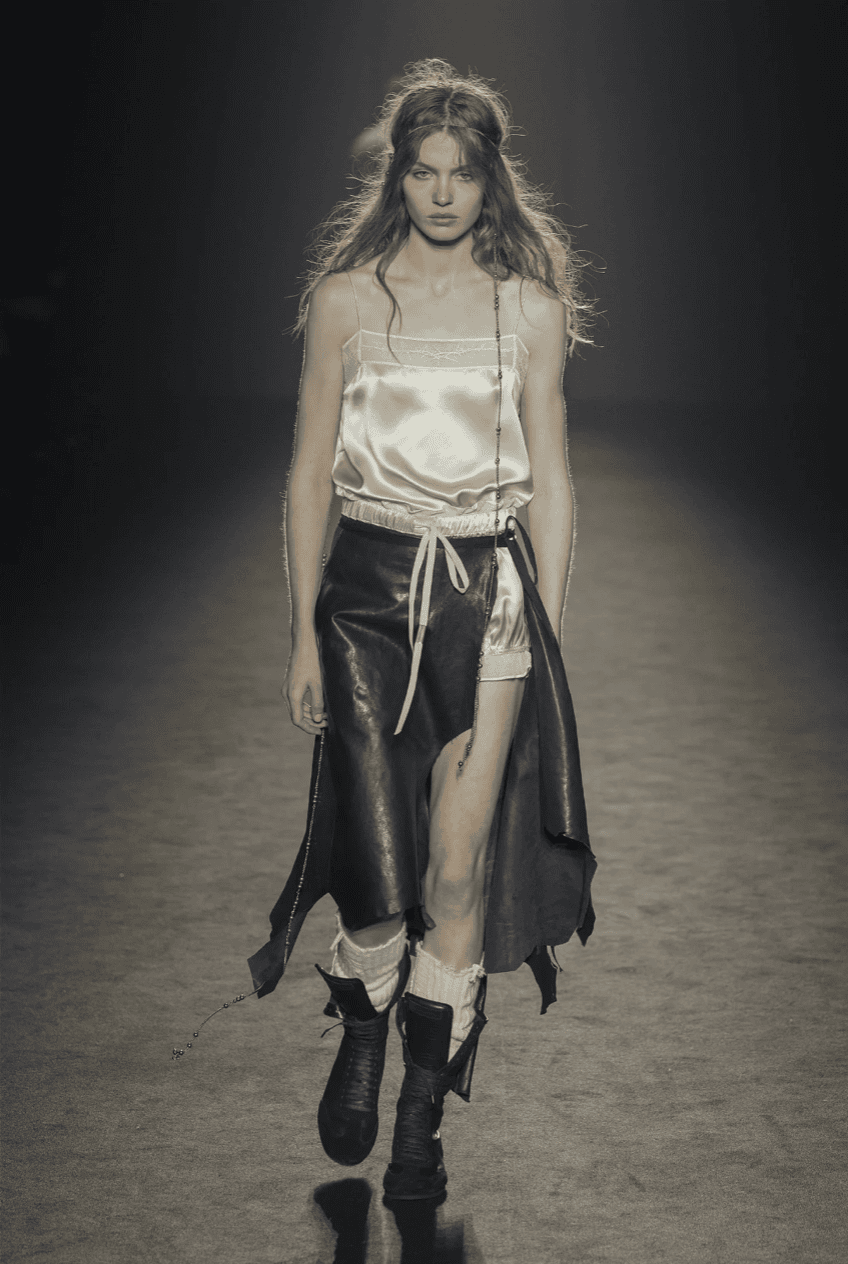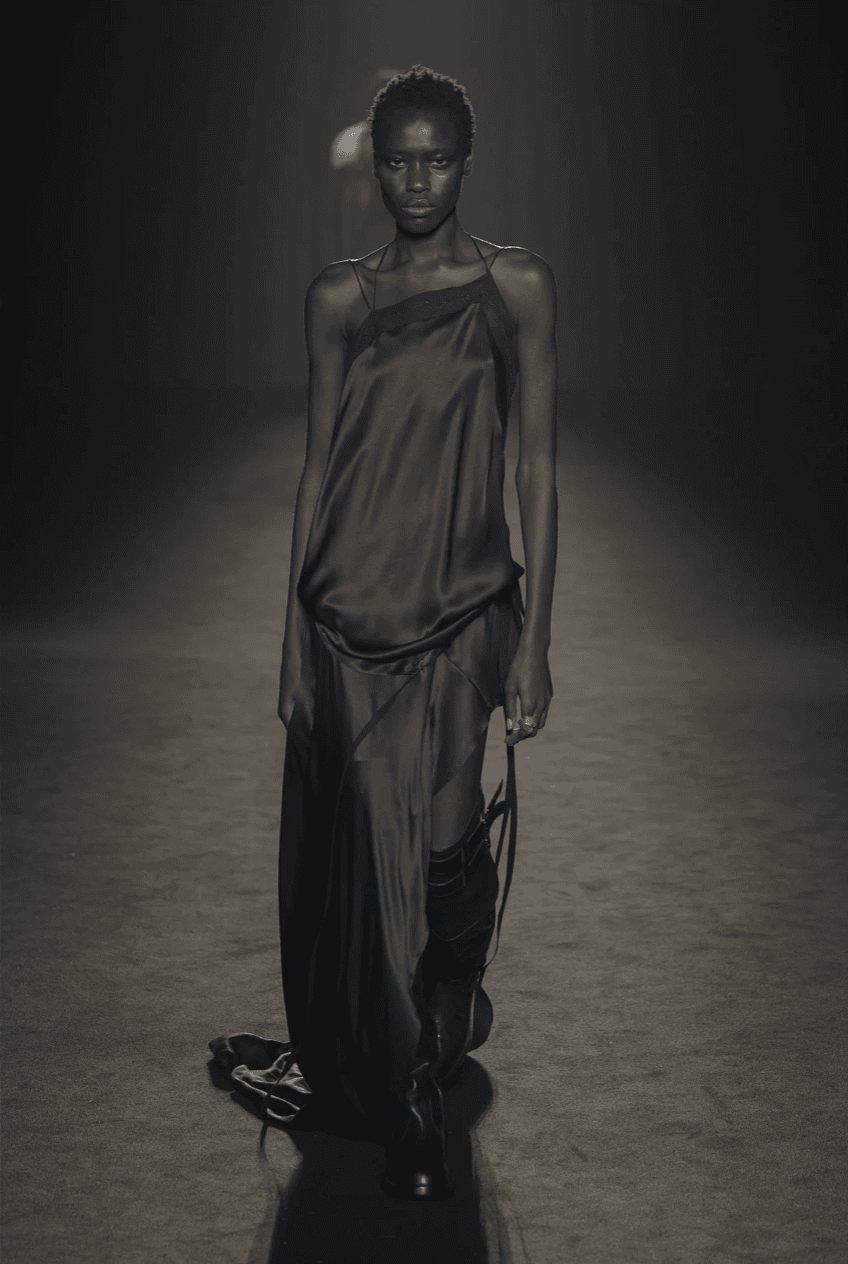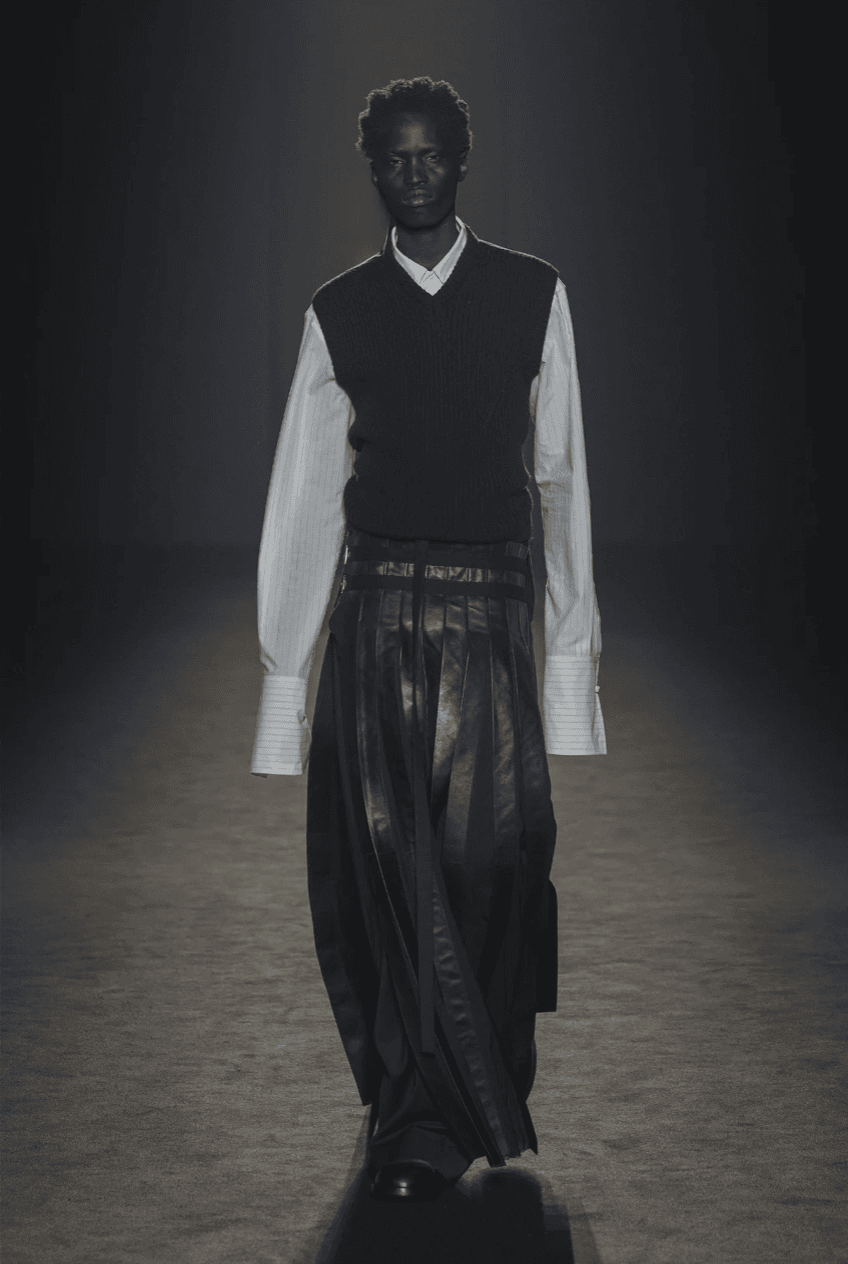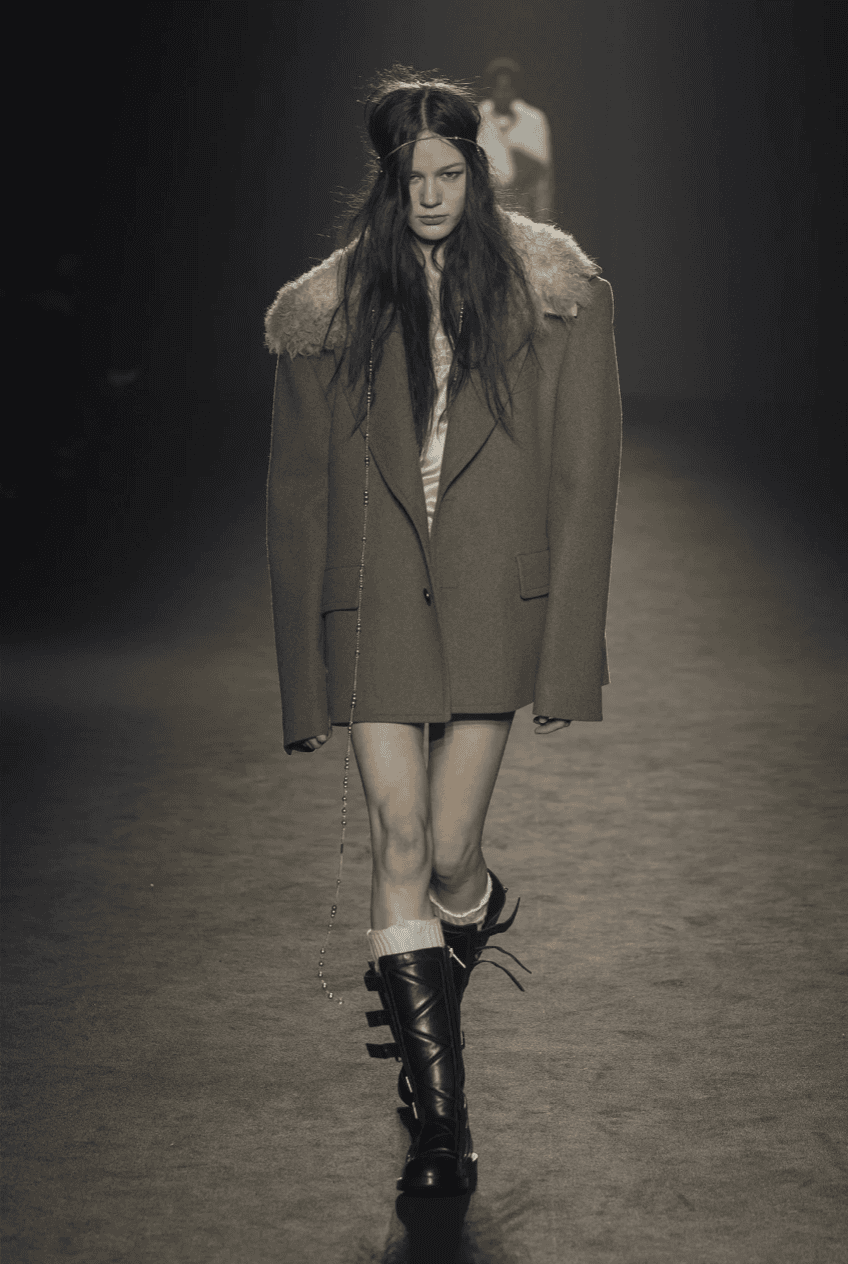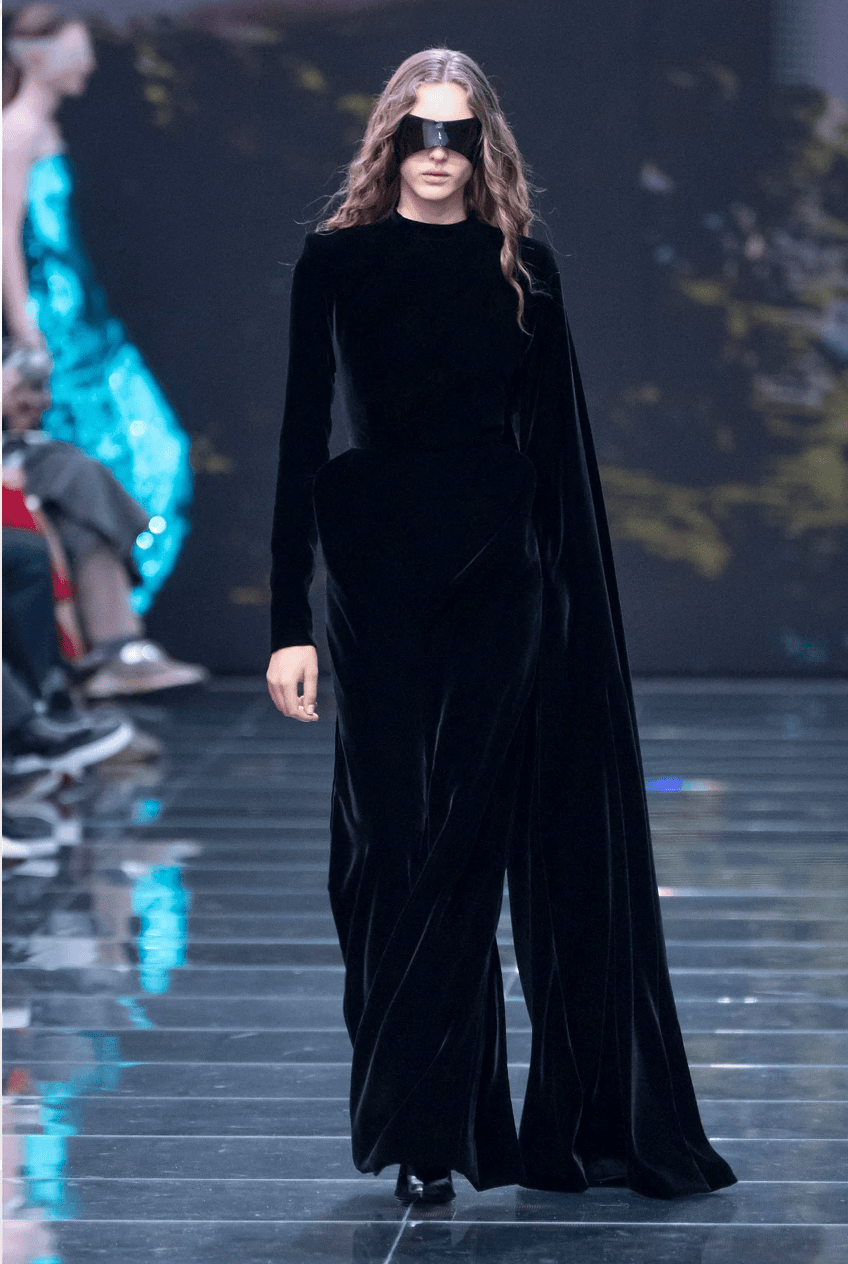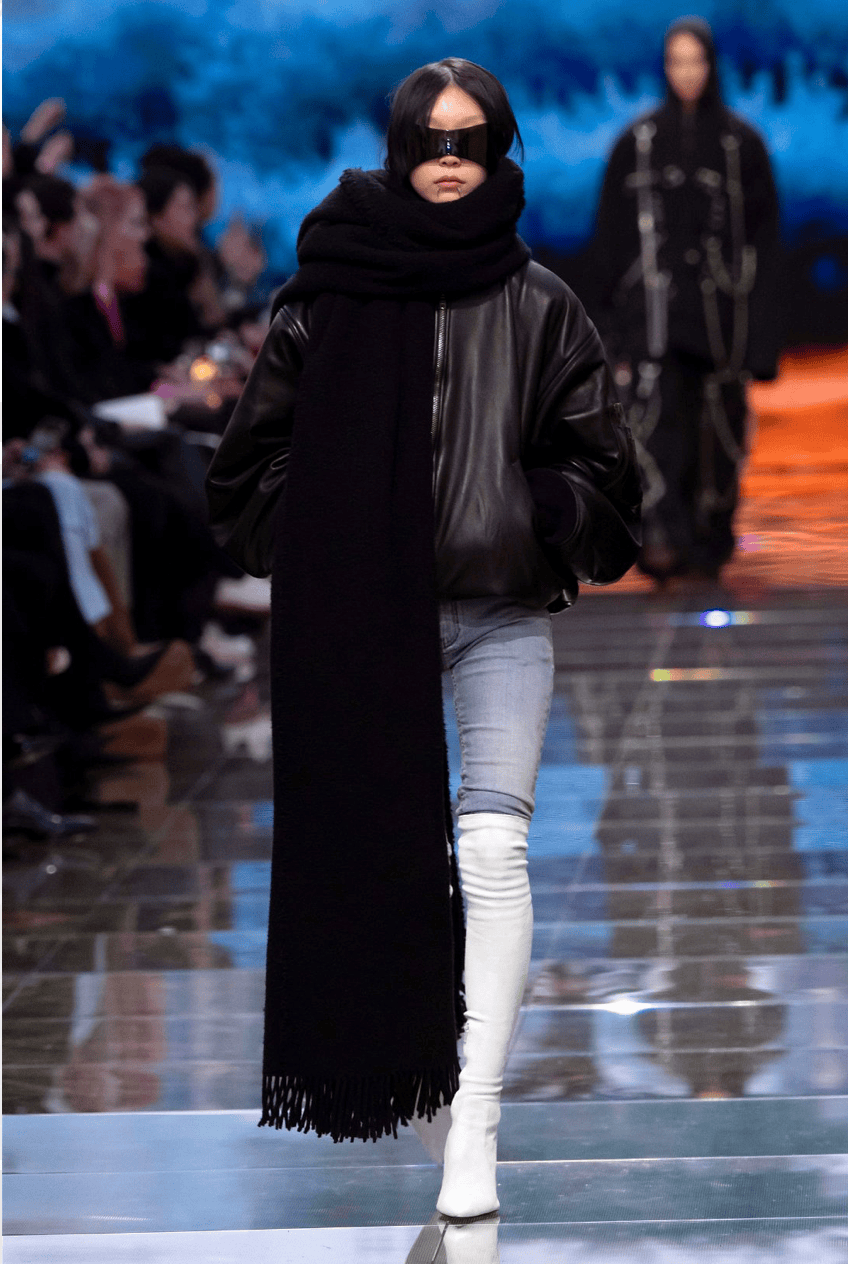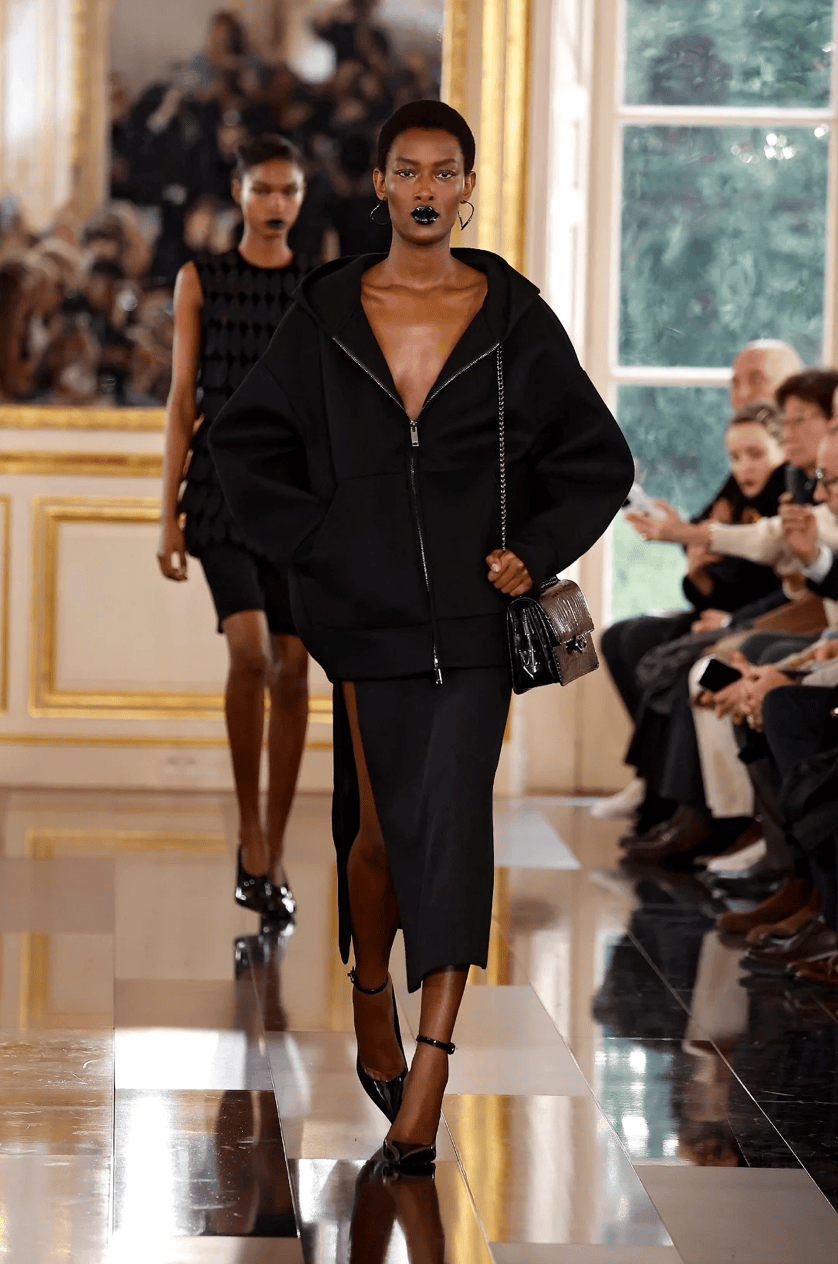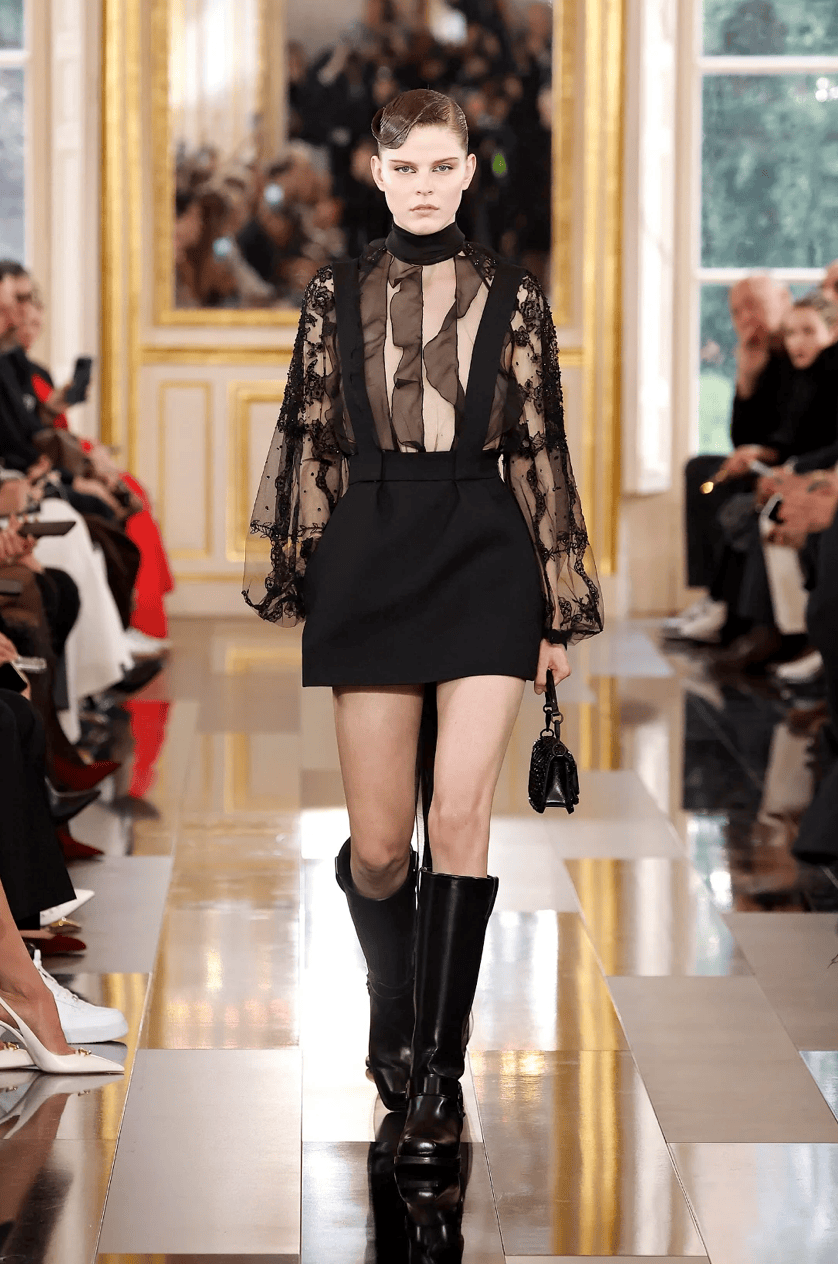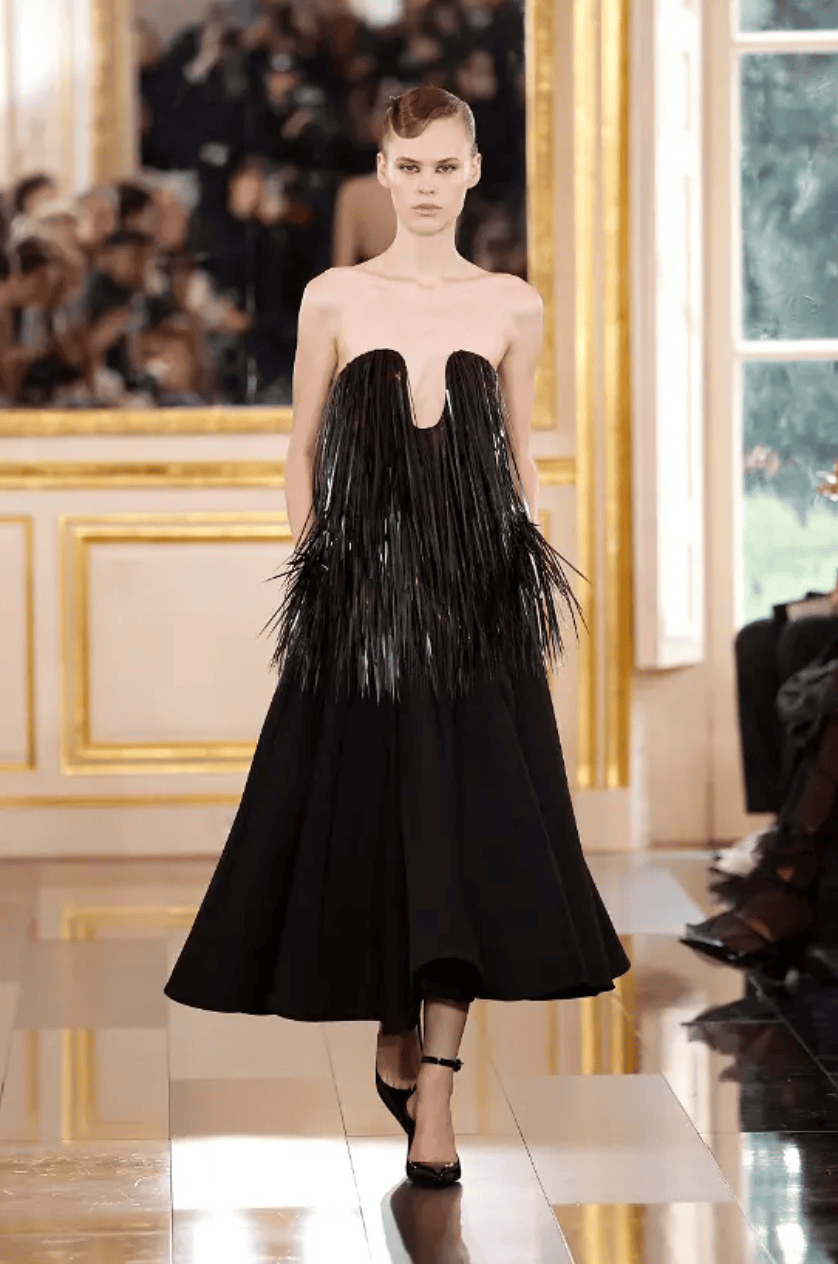Wake up, rub your eyes, and take a glimpse outside through the curtains. It’s raining. Throw on your leather coat over your inherited silk nightset, step into your boots, and make your way to the cafe downstairs. They saw you entering earlier this morning. Double espresso and pain au chocolat. Back inside, scroll through last night’s photos at Ann Demeulemeester’s after-show party.
Stefano Gallici delivered his sophomore collection for Ann Demeulemeester with a strong sense of storytelling, guiding viewers through what seemed to depict journeys of different natures, each with an accompanying wardrobe. This Fall quest was less of a daydream and more of a journey through the night, which involved Galici’s own dive into the label’s archives, notably present in the edgy styling decisions.
Season staples like down coats came in buttery (black, of course) leather, while knitwear was ripped or shrunk; when not both. Gallici’s waistcoats exuded a distinctly military flair, extending beyond the expected forest green palette. Notably, they were meticulously re-proportioned, and the elongated sleeves introduced a sense of substantial weight to the overall silhouette. A sense of rebellion permeated the cut of many pieces, like the raw cuts on the hems of a leather skirt.
The Balenciaga show kicked off with the angry stomping of a model in a sequined, couture-cut dress. Everything about the silhouette screamed hours of construction—as the show notes revealed, it was inspired by Cristobal Balenciaga’s ‘Hip Aulette’ construction, which features shoulder pads sewn into the hips to expand them and create volume. The energy evoked by the scene, colored paillettes, and cheetah print included, tapped into Demna’s tendency for mimicking quotidian mannerisms and satirizing them with his design. This collection wasn’t exempt from this approach.
Depictions of actual quotidian scenes, some half or fully altered by artificial intelligence, were shown during the show on the kilometric screens that encased the show space. The meta-reality paralleled life in detriment because of the altering effects of AI, while the collection itself revised the current state of creativity–which Demna thinks is in decline–and his own body of work in ten years as a fashion designer. The Demna-isms were vividly present in the master of classic silhouettes, and the subversion of them, while the more contemporary propositions happened towards the streetwear side.
At Balenciaga, the silhouette normally drags or hangs, and for Fall 2024, the concept was taken to its most literal side. Price tags hung from within the garments and were left visible, a styling decision that proposed a mockery of consumerism, but also the embracement of it. Hems on tailoring reached floor length, yet so precisely cut that they reached it just so. Sleeves, in good Demna fashion, surpassed the extremities, something that in a leather bomber and a form-fitting leather dress, looked rather chic, I must say.
This Fall collection brought a big turn for Balenciaga in terms of leather goods, with bags departing the grunge and reaching a more standardized, classic side. The eclectic styling of multilayered jersey pieces was set against finely-cut totes and smooth cross-body messenger paired with the men’s looks. Accessories are where the show came together in storytelling and the potential for merchandising, with so many pieces to be offered, from phone cases to gloves and keychains, that almost anyone can buy into this real-not-so-real Balenciaga fantasy.
For Fall, Valentino delved into the many dimensions black can take when it transcends its role merely as a color. “I approached black as a canvas, a starting point on which to build layers and structures, silhouettes that could move while looking for the lights around, to soak them in and reflect them,” said Pierpaolo Piccioli in a press statement.
It emerged in the collection as a conduit that surpassed the visual spectrum and became an agent to tap into concepts such as volume and texture. Silhouettes brought a sociological depth to the soberness of the color, with Piccioli using construction to address the politics associated with the female body. At Valentino, the monochrome theme has been running since the Spring 2024 collection, when Piccioli decanted to show an almost entirely white collection. At the time, the decision was motivated by the political panorama revolving around women in Italy.
Valentino’s black exploration resulted in 63 outings that ranged from casual wear to evening. Solid silhouettes were expressed in precise suiting, most of it featuring prominence in the shoulders. An oversized dinner jacket in particular recontextualized conventional construction, exchanging traditional cuffs for rosettes around the wrist hem. A mini dress in the second, like Anish Kapoor’s Vantablack, absorbed the entirety of light that ricocheted on it. “Only when in the dark, you look for the light,” said Piccioli, thus he went on a quest for light in watery silks, patent leather, and intricate paillette configurations.
The romanticism of Valentino isn’t lost in the severity of black. Transparencies and lacework exuded femininity and danced in the air as the models walked around the grand salon where the collection was presented. The act of opposition is an act of strength, and Pierpaolo Piccioli isn’t afraid to create dichotomies when it comes to his styling. Take, for example, the organza blouses set against sturdy biker boots, throwing a mini bag for irony, or even the audacious take of giving a dress cut on the bias a visual counterbalance with strong, strictly horizontal shoulders.
